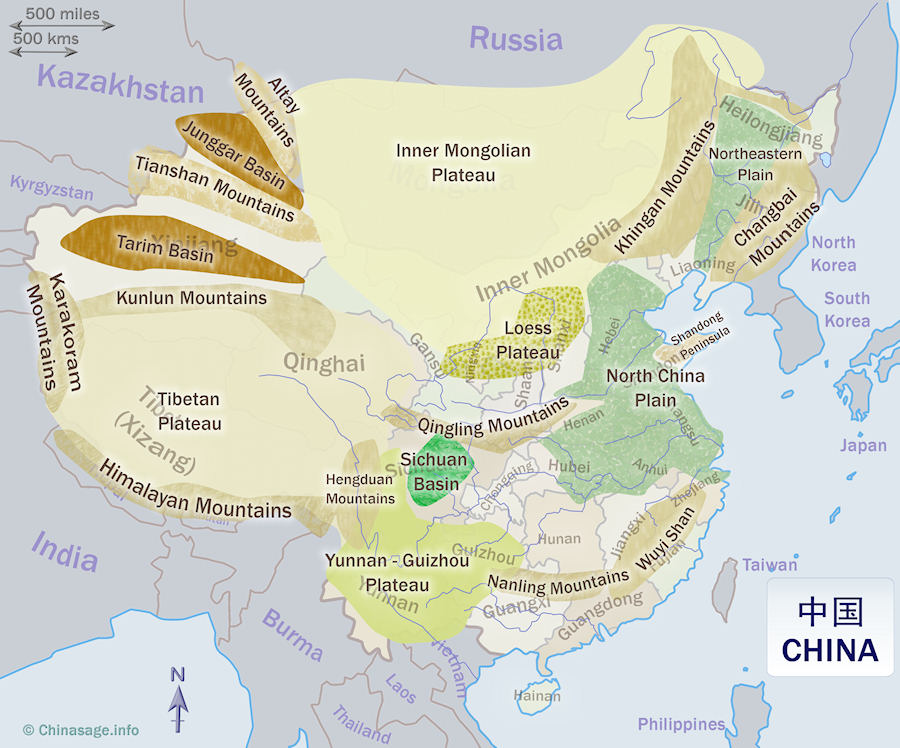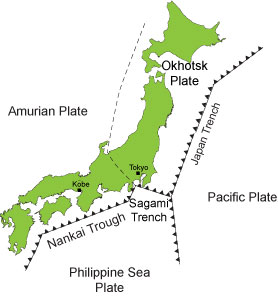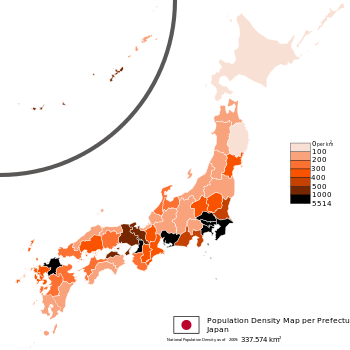-
Chapter 1: CHINA AND JAPAN
China:
Plateaus of china are Tibetan plateau, Yunnan plateau and loess plateau. 1/3rd of china is mountainous and 90% of china lives on the eastern coast.

Fig 1: Plateaus of China
Climate of China:
Climate of northern china is Laurentian type in the north and china type in the south.
China type climate sees rainfall throughout the year, in summer intense heating in central Asia which attracts the south east monsoon rain. In winter the Siberian plateau becomes high pressure zone and cold air flows outwards as northwest winds lead to snowfall and rain on windward side of mountains.
Rainfall is also due to typhoons in late summer.

Fig 2: Rainfall in China
Vegetation in China:
High rainfall, long growing season and warm temperature are seen in china type climate. Evergreen vegetation have broadleaved forest with grass, fern, bamboos and palms.
Intensive agriculture is practiced and China is the largest producer of rice, wheat, rapeseed, silk, cotton and groundnut. Around 10-15% of China is arable.
Rivers:
Huang He (yellow river) is a perennial river cutting across the loess plateau. It is the highest sediment carrying river in the world that shifts constantly. It is important for wheat cultivation.
Yangtze river is responsible for half of China's agricultural produce. 35% population of China lives along it. Highest navigable river in China. Shanghai is the world busiest container port and financial center of China. Hydroelectricity is generated by dams on the river.
Manchurian basin to the north of China is a major cultivation area. It has rich black soil and is major producer of soya bean, wheat. Petroleum, coal, uranium are found in this region.
Fig 3: Rivers of China
Political Map of China:
There are 23 provinces, 5 autonomous regions, 4 centrally administrative region and 2 special administrative region.
Coal reserve of China:
Coal reserve of China is present in the eastern region. 2Nd largest reserve of coal in the world. 2/3rd of the coal reserves are present there. Iron and petroleum reserves are located also in the east.
China
is
the largest producer of tin in the world
Rare earth elements are produced by China and it has a monopoly. 90% of it comes from China. Rare earth metals are used in gadgets, camera lenses, magnets, solar panels and missile defense systems.
However refining the rare earth reserve of China a large amount of toxic acids are needed. 2000 tons of waste is generated for 1 ton of rare earth metals. China imposing tariff restrictions on rare earth to generate funds to reduce the environmental damage. India is 2nd largest rare earth element producer.
Japan:
China and Japan are separated by the Korean strait, sea of china and la Perouse strait. Japan is at the junction of three plates which have collided. The ocean ocean plate collision has created volcanic mountains in japan. The possibility of earthquakes and tsunamis are higher in japan.

Fig 4: Japan
Most of the population lives on the eastern coast of japan. 80% of the topography is rugged. No large river system in japan.

Fig 5: Japanese demography
- The northern part of china is Laurentian type and southern part of japan is china type.
- Rainfall from south east monsoon in summer and north west monsoon in winter is seen.
- 20% land is cultivable so indoor farming is practiced. LED's are used for photosynthesis.
- Fishery sector of japan is well developed. It is one of the largest in the world. Deep sea fishing, aqua culture, artificial insemination and modern hatching techniques.
- Large continental shelf, temperate waters, indented coastline and meeting of warm and cold currents have led to this.
Mineral wealth:
Japan is the largest importer of coal, natural gas and oil. 95% of iron, tin, copper needed for domestic demand is imported. Copper, petrol, iron reserves are seen in japan.
Chapter Review
Score more than 80% marks and move ahead else stay back and read again!